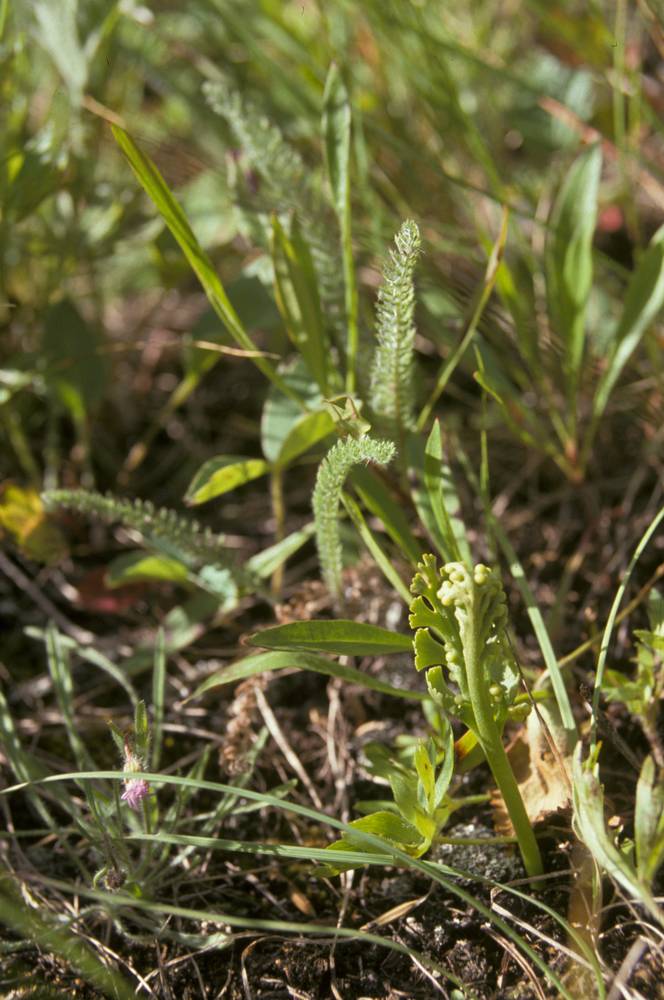Botrychium ascendens
upswept moonwort
(40)44–47(54) μm.
well developed; greater than 2 cm, green.
sessile or short-stalked; the stalk occasionally to 2 cm long;
blade 1-pinnate, narrowly oblong-triangular; to 6 × 2 cm, yellow-green and shiny in life;
pinnae to 6 pairs, strongly ascending, narrowly fan-shaped, spanning an arc of less than 90°; broadest at the outer margin, usually coarsely toothed and with 2–5 lobes; lower pinnae often bearing marginal sporangia.
stiffly erect;
stalk 0.5–1 times as long as the trophophore at spore release, rarely longer;
branches mostly simple, strongly ascending.
=180 (allotetraploid, apparently derived from B. crenulatum and B. lineare).
Botrychium ascendens
Open, well-drained areas and historically disturbed sites with a sparse to dense cover of grasses, forbs, and small shrubs or conifer saplings, such as montane or subalpine meadows, avalanche meadows, road shoulders, ski areas, and mining disturbances. 1500–2000 m. BW. CA, ID, NV, WA; scattered in western and northeastern North America. Native.
Botrychium ascendens is easily confused with B. crenulatum, B. lineare, and B. minganense.
Ben Legler
- Local floras:
BC,
CA,
OR,
WA
- Local Web sites:
CalFlora,
CalPhotos,
Flora NW,
PNW Herbaria
WildflowerSearch
iNaturalist (observations)
USDA Plants Database
- LBJ Wildflower Center
- SEINet
- Plants of the World Online
- Encyclopedia of Life
- Wikipedia
- Google Image Search



